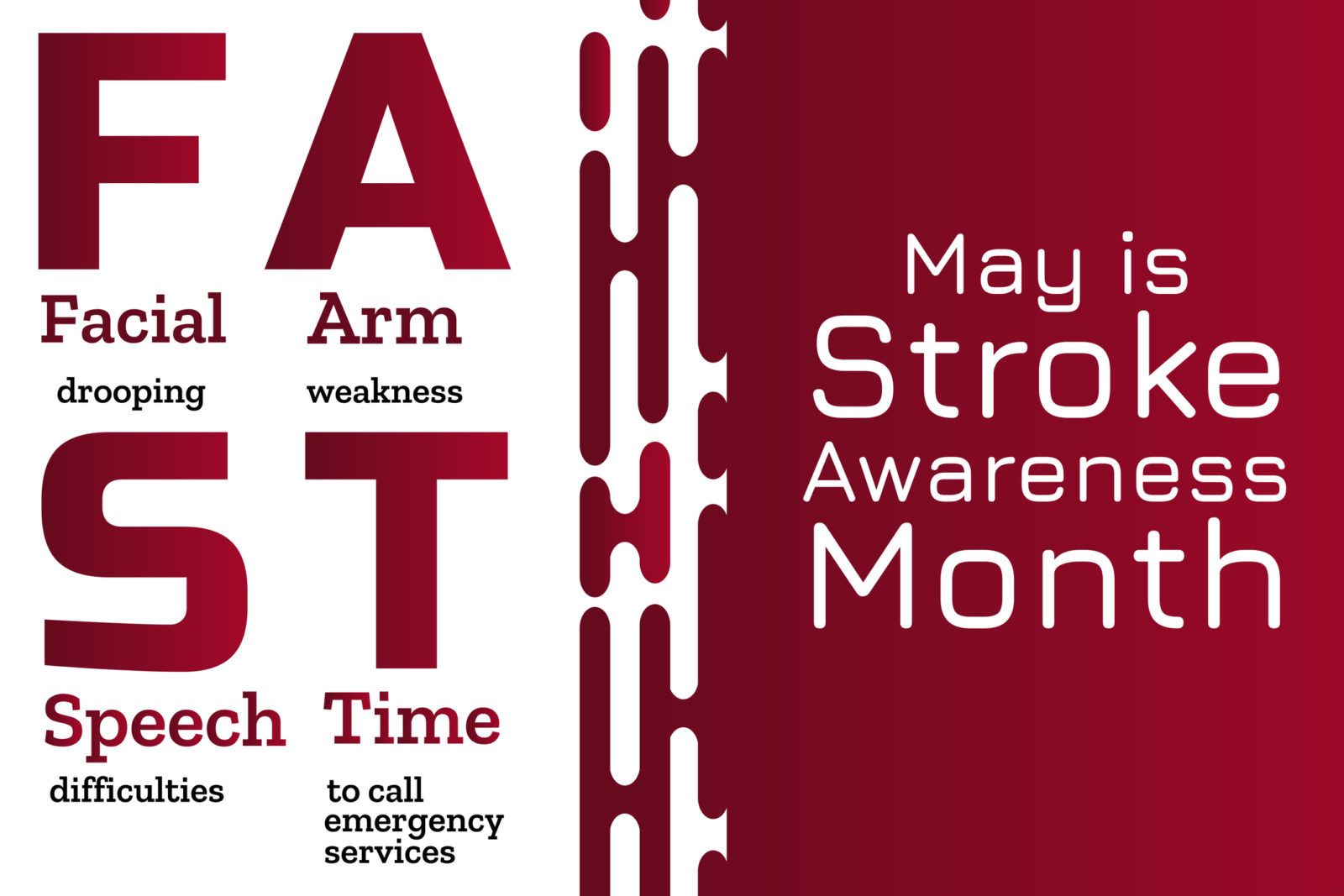May Is American Stroke Month

If you’ve suffered a stroke, you’re not alone. Almost 800,000 Americans experience a stroke every year—one every 40 seconds. More than 7 million have had a stroke in their lifetime, and many are still living with the effects of this condition. Stroke is the leading cause of serious, long-term disability.
While the effects of stroke can be quite serious, the research news is not all bad: 10% of stroke survivors recover completely, and another 25% recover with minor impairments, according to the National Stroke Association. While rehabilitation cannot “heal” stroke, it can help you achieve the best possible outcome and improve independent living and quality of life.
When and How Does Recovery Begin?
Rehabilitation aims to help patients “relearn” skills that are lost or impaired when a stroke occurs. Think of how you first learned a new skill, such as riding a bicycle. The ability to learn the skill came with practice, and rehabilitation professionals agree that the most important key to success is carefully directed well-focused, repetitive practice. Recovery also involves learning new ways of doing things. For example, you may learn to bathe or dress yourself using one hand or put your shoes on with a shoehorn.
Rehabilitation therapy begins in the hospital within 24 to 48 hours after the stroke occurs. Because the stroke may cause weakness or paralysis, the first part of recovery involves independent movement. A therapist may help you move the affected limbs at first. You may also be encouraged to perform exercises on your own if you can.
Regaining the ability to carry out the basic activities of daily living is the first step to returning to independent living. Ongoing therapy with a variety of therapists may be needed for months, or even years. Remember, practice is essential to a successful recovery!
What is Involved in Stroke Rehabilitation?
Generally, stroke can cause five types of disabilities:
- paralysis or problems controlling movement
- sensory disturbances, including pain
- problems using or understanding language
- problems with thinking and memory
- emotional disturbances
The kind of rehabilitation your doctor prescribes depends on the type and degree of disability your stroke has caused. Post-stroke rehabilitation involves collaborative teamwork, including various healthcare professionals and Charlesgate staff working with you to achieve your specific set of goals.
Neurologists usually lead acute-care stroke teams and direct patient care during hospitalization, and they sometimes remain in charge of long-term rehabilitation. However, physicians trained in other specialties often assume responsibility after the acute stage has passed, including physiatrists, physicians who specialize in physical medicine and rehabilitation.
Your own doctor will have the primary responsibility for recommending a rehabilitation plan that will best address your needs. Your doctor may also recommend lifestyle changes and/or medication to help prevent a second stroke. These changes may include controlling high blood pressure or diabetes and eliminating risk factors such as cigarette smoking, excessive weight, a high-cholesterol diet, and high alcohol consumption.
Other health care professionals who may help with your recovery include:
- Rehabilitation nurses, who specialize in nursing care for people with disabilities
- Physical therapists, who help restore physical functioning by evaluating and treating problems with movement, balance, and coordination
- Occupational therapists, who provide exercises and practice to help you perform activities of daily living
- Speech-language pathologists, who may help you improve your language skills
- Social workers, who may help you with financial decisions and help you plan the return to home or a new living place
- Psychologists or other mental health professionals, who can help with emotional and behavioral changes that may occur after stroke, as well as depression, a common side effect
- Therapeutic recreation specialists, who can assist you in resuming as fully as possible the hobbies and leisure time activities you enjoyed before your stroke
![Charlesgate [logo]](https://www.charlesgate.net/wp-content/uploads/sites/218/2016/12/logo-new.png)